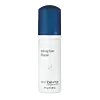What's inside
What's inside
 Key Ingredients
Key Ingredients

No key ingredients
 Benefits
Benefits

 Concerns
Concerns

No concerns
 Ingredients Side-by-side
Ingredients Side-by-side

Water
Skin ConditioningDisodium Cocoyl Glutamate
CleansingGlycerin
HumectantPolyglyceryl-10 Caprylate
EmulsifyingLauramidopropyl Betaine
CleansingPolyglyceryl-6 Caprylate
EmulsifyingPolyglyceryl-4 Caprate
EmulsifyingEthoxydiglycol
HumectantMagnesium Aspartate
Skin ConditioningZinc Gluconate
Skin ConditioningCopper Gluconate
Skin ConditioningGlycolic Acid
BufferingLactic Acid
BufferingSalicylic Acid
MaskingMalic Acid
BufferingBisabolol
MaskingHydrolyzed Jojoba Esters
Skin ConditioningBeta-Glucan
Skin ConditioningAlgin
MaskingTocopheryl Acetate
AntioxidantTocopherol
AntioxidantEthyl Macadamiate
Skin ConditioningSodium Cocoyl Glutamate
CleansingGlyceryl Caprylate/Caprate
EmollientXanthan Gum
EmulsifyingPentylene Glycol
Skin Conditioning1,2-Hexanediol
Skin ConditioningDecylene Glycol
Skin ConditioningSodium Chloride
MaskingCitric Acid
BufferingSodium Magnesium Silicate
Phytic Acid
Phenoxyethanol
PreservativeBenzoic Acid
MaskingSorbic Acid
PreservativeWater, Disodium Cocoyl Glutamate, Glycerin, Polyglyceryl-10 Caprylate, Lauramidopropyl Betaine, Polyglyceryl-6 Caprylate, Polyglyceryl-4 Caprate, Ethoxydiglycol, Magnesium Aspartate, Zinc Gluconate, Copper Gluconate, Glycolic Acid, Lactic Acid, Salicylic Acid, Malic Acid, Bisabolol, Hydrolyzed Jojoba Esters, Beta-Glucan, Algin, Tocopheryl Acetate, Tocopherol, Ethyl Macadamiate, Sodium Cocoyl Glutamate, Glyceryl Caprylate/Caprate, Xanthan Gum, Pentylene Glycol, 1,2-Hexanediol, Decylene Glycol, Sodium Chloride, Citric Acid, Sodium Magnesium Silicate, Phytic Acid, Phenoxyethanol, Benzoic Acid, Sorbic Acid
 Reviews
Reviews

Ingredients Explained
These ingredients are found in both products.
Ingredients higher up in an ingredient list are typically present in a larger amount.
Glycerin is already naturally found in your skin. It helps moisturize and protect your skin.
A study from 2016 found glycerin to be more effective as a humectant than AHAs and hyaluronic acid.
As a humectant, it helps the skin stay hydrated by pulling moisture to your skin. The low molecular weight of glycerin allows it to pull moisture into the deeper layers of your skin.
Hydrated skin improves your skin barrier; Your skin barrier helps protect against irritants and bacteria.
Glycerin has also been found to have antimicrobial and antiviral properties. Due to these properties, glycerin is often used in wound and burn treatments.
In cosmetics, glycerin is usually derived from plants such as soybean or palm. However, it can also be sourced from animals, such as tallow or animal fat.
This ingredient is organic, colorless, odorless, and non-toxic.
Glycerin is the name for this ingredient in American English. British English uses Glycerol/Glycerine.
Learn more about GlycerinPhenoxyethanol is a preservative that has germicide, antimicrobial, and aromatic properties. Studies show that phenoxyethanol can prevent microbial growth. By itself, it has a scent that is similar to that of a rose.
It's often used in formulations along with Caprylyl Glycol to preserve the shelf life of products.
Sodium Cocoyl Glutamate is a gentle cleanser and surfactant. It is the sodium salt of the Cocoyl Glutamic Acid and comes from coconut oil. As a surfactant, it helps lift dirt and oil to be washed away.
Sodium Cocoyl Glutamate also has an emolliating effect and can help leave the skin feeling soft.
Water. It's the most common cosmetic ingredient of all. You'll usually see it at the top of ingredient lists, meaning that it makes up the largest part of the product.
So why is it so popular? Water most often acts as a solvent - this means that it helps dissolve other ingredients into the formulation.
You'll also recognize water as that liquid we all need to stay alive. If you see this, drink a glass of water. Stay hydrated!
Learn more about Water